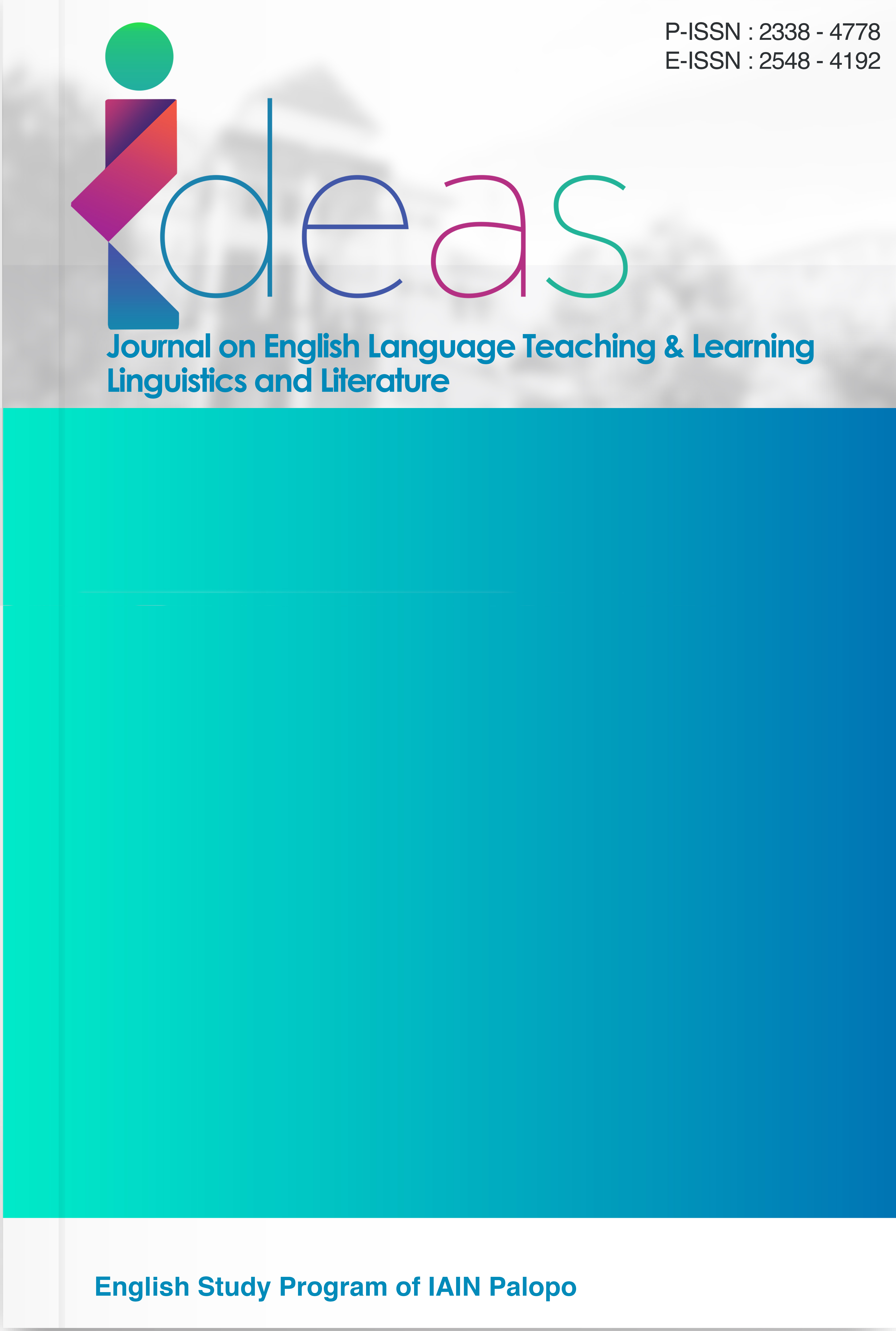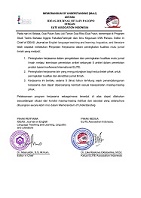Kahoot as a Digital Game-Based Instruction for EFL Young Learners: Students' Perceptions
DOI:
https://doi.org/10.24256/ideas.v13i2.7811Keywords:
Kahoot, Digital, Game, Instruction, EFL, StudentAbstract
This study explores young learners’ perceptions of Kahoot as a digital game-based instruction tool in English as a Foreign Language (EFL) classrooms. The research was conducted with 18 fourth-grade students (ages 9–10) at a private elementary school in Medan, North Sumatra, Indonesia. Most participants were at beginner to lower-intermediate English proficiency levels with varied digital literacy. Data were collected over a period of three weeks using observation and interviews and analyzed thematically. Findings revealed that Kahoot positively influenced students’ learning experiences in several ways. First, it significantly increased motivation and engagement, with 14 students reporting greater enthusiasm compared to textbook-based lessons. Second, all students highlighted the fun and interactive nature of Kahoot, supported by visual and auditory features that encouraged participation. Third, 12 students emphasized its effectiveness in vocabulary and grammar acquisition, while half (9 students) reported increased self-confidence in language use. However, challenges were also identified, including technical issues, limited variety of activities, and stress caused by competition for a few learners. Overall, the study concludes that Kahoot can serve as an effective supplement to EFL instruction for young learners, fostering motivation, confidence, and language acquisition. Practical recommendations are provided for teachers, policymakers, and developers, along with suggestions for future research.
References
Branch, R. M. (2009). Instructional design: The ADDIE approach. Springer.
Braun, V., & Clarke, V. (2006). Using thematic analysis in psychology. Qualitative Research in Psychology, 3(2), 77-101. https://doi.org/10.1191/1478088706qp063oa
Braun, V., & Clarke, V. (2022). Thematic Analysis: A Practical Guide. Sage Publications.
Chapelle, C. A. (2001). Computer applications in second language acquisition: Foundations for teaching, research, and technology. Cambridge University Press.
Chen, J., & Chang, H. Y. (2022). Exploring the effectiveness of digital game-based learning for EFL young learners: A meta-analysis. System, 108, 102796. https://doi.org/10.1016/j.system.2022.102796
Creswell, J. W. (2014). Research Design: Qualitative, Quantitative, and Mixed Methods Approaches (4th ed.). Sage Publications.
Deci, E. L., & Ryan, R. M. (1985). Intrinsic motivation and self-determination in human behavior. Plenum.
Horwitz, E. K., Horwitz, M. B., & Cope, J. A. (1986). Foreign Language Classroom Anxiety. The Modern Language Journal, 70(2), 125-132. https://doi.org/10.1111/j.1540-4781.1986.tb05256.x
Hwang, G. J., & Fu, Q. K. (2021). Effects of digital game-based learning on students' English vocabulary acquisition and learning motivation: A systematic review. Interactive Learning Environments, 29(5), 897-915. https://doi.org/10.1080/10494820.2019.1601662
Kahoot! (2025, January 15). New research: Kahoot! improves student learning outcomes, retention, motivation, and more. Kahoot! Blog. https://kahoot.com/blog/2025/01/15/new-research-kahoot-improves-learning-outcomes-retention-motivation/
Kapp, K. M. (2012). The Gamification of Learning and Instruction: Game-based Methods and Strategies for Training and Education. Wiley.
Krashen, S. D. (1985). The Input Hypothesis: Issues and Implications. Longman.
Kruk, M., & Przymus, P. (2023). Digital game-based language learning for young learners: A systematic review. Computer Assisted Language Learning, 36(3), 517-548. https://doi.org/10.1080/09588221.2021.1979401
Madehang, M., Masruddin, M., & Iksan, M. (2024). Reflecting on the Implementation of Online English Learning in Islamic Higher Education: Lecturers and Students’ Perspectives. International Journal of Asian Education, 5(3), 183-197.
Madehang, M., Masruddin, M., & Iksan, M. (2024). Reflecting on the Implementation of Online English Learning in Islamic Higher Education: Lecturers and Students’ Perspectives. International Journal of Asian Education, 5(3), 183-197.
Masruddin, Hartina, S., Arifin, M. A., & Langaji, A. (2024). Flipped learning: facilitating student engagement through repeated instruction and direct feedback. Cogent Education, 11(1), 2412500.
Öztürk-Taş, H., Keleş, N., & Aydın-Yazıcı, E. (2025). Digital game-based learning for grammar in EFL contexts: A systematic review. Bingöl University Journal of Social Sciences Institute, 29, 396–415. https://doi.org/10.29029/busbed.1577664
Rahayu, S. N., & Lestari, S. (2024). Peran Game-Based Learning dalam Meningkatkan Kosakata Bahasa Inggris Siswa Kelas Rendah di Sekolah Dasar. Jurnal Edukasi: Penelitian Pendidikan, 13(1), 78-90.
Rahmadani, F. G., Saman, T. N., & Bahing. (2024). Students’ perception of game-based learning using Kahoot! in learning English. EBONY: Journal of English Language Teaching, Linguistics, and Literature, 4(1), 28–38. https://doi.org/10.37304/ebony.v4i1.12442
Sari, R. K., & Pratiwi, A. (2023). Peningkatan Minat Belajar Bahasa Inggris Melalui Penerapan Permainan Edukasi Digital pada Siswa Sekolah Dasar. Jurnal Pendidikan Bahasa Inggris Indonesia, 11(2), 150-165.
Yin, R. K. (2018). Case Study Research and Applications: Design and Methods (6th ed.). Sage Publications.
Downloads
Published
Issue
Section
Citation Check
License
Copyright (c) 2025 Melisa Khoyyiroh Harahap, Utami Dewi, Ernita Daulay

This work is licensed under a Creative Commons Attribution-ShareAlike 4.0 International License.
Authors retain copyright and grant the journal right of first publication with the work simultaneously licensed under an Attribution-ShareAlike 4.0 International (CC BY-SA 4.0) that allows others to share the work with an acknowledgement of the work's authorship and initial publication in this journal.
Authors are able to enter into separate, additional contractual arrangements for the non-exclusive distribution of the journal's published version of the work (e.g., post it to an institutional repository or publish it in a book), with an acknowledgement of its initial publication in this journal.
Authors are permitted and encouraged to post their work online (e.g., in institutional repositories or on their website) prior to and during the submission process, as it can lead to productive exchanges, as well as earlier and greater citation of published work (See the Effect of Open Access)




